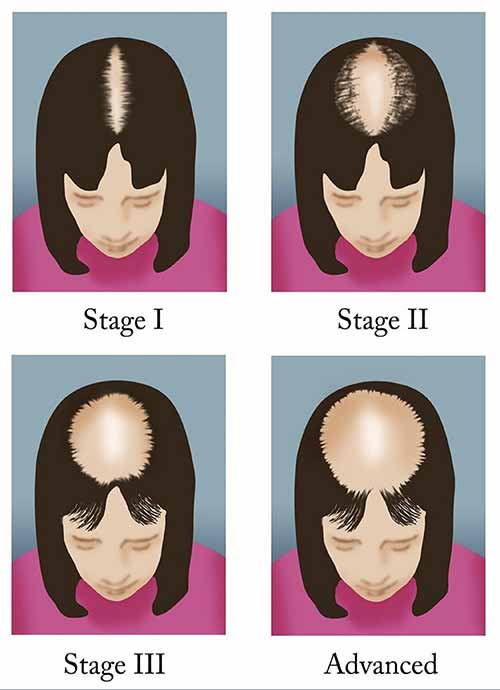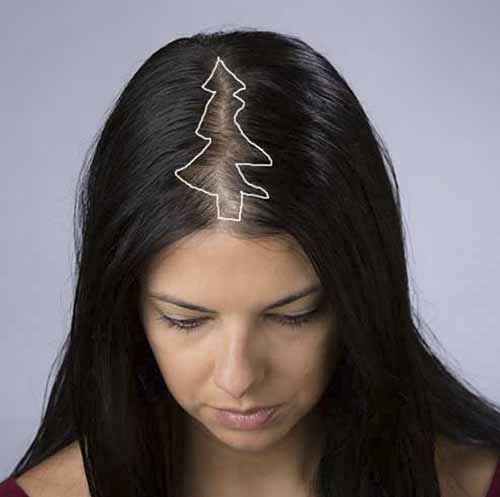Anyone who thinks that a one-day treatment will solve hair loss is wrong. The amount of hair that falls down the shower drain cannot be considered normal throughout life, quite the contrary. According to physician and trichologist Dr. Ademir Carvalho Leite Júnior, this fall may indicate a possible change in the scalp that needs to be investigated.
One of the conditions that can be identified is androgenetic alopecia, also known as female pattern baldness. Generally, women do not come to the office suspecting this diagnosis. The trichologist explains that it is common for the patient to be referred to the specialist because of telogen effluvium, a disease that causes despair, as the person has the impression that he will lose all his hair overnight.
Effluvium is characterized by hair loss far above normal in everyday situations, such as brushing your hair. A person can lose more than 300 strands a day, while normal is up to 100 strands a day.
According to the expert, effluvium is a sign of future problems. While it can be scary to go through this phase, it is possible to reinterpret it as a positive sign, as it brought the person to the doctor’s office before the development of early female pattern baldness. The woman needs to see this negative experience as transformative, even grateful for having happened, to take the necessary measures and avoid a bigger problem in the future.

Upon receiving the diagnosis of effluvium, treatment is indicated to promote hair recovery. Capillary loss can be quantitative, resulting in a decrease in the number of hairs, or qualitative, with a progressive reduction in the thickness of the hairs until they disappear. These patterns can occur together or separately, and this is a red flag for baldness.
Androgenetic alopecia is a manifestation of slow and almost imperceptible evolution. Generally, the “traditional” drop seen in the shower drain is observed. Over time, its incidence has increased due to the new lifestyle of women, with a greater workload, stress, responsibilities and changes in eating habits. The doctor emphasizes that there may not be laboratory alterations in the exams, such as hormonal imbalances, vitamin deficiency or menopause, but usually there are indications of these problems.
“Based on clinical experience over the years, it is possible to observe changes in the female scalp. Two decades ago, there was one woman for every 20 men seen; today, the proportion is three men for every 17 women”, explains the specialist.
Photos: Disclosure/Dr Ademir Jr.
hair loss patterns
There are different patterns of hair loss in androgenetic alopecia. One of them is rarefaction in the middle of the scalp, which extends over time, also affecting the sides and the posterior region, as an extension of the fall. Another commonly observed pattern is called the “Christmas tree”, which occurs in the central area. In this case, there is an overlap between the center line of hair loss and a triangle, with the point at the top of the head and the base at the front line.
In addition to visible hair loss, other discomforts may arise, such as itching, pain, seborrhea, increased sensitivity in the scalp and associated dermatitis. When treatment begins, the aim is to recover the capillary mass within the limits determined by the female body, taking into account the patient’s age and health condition.
Different treatments
“It is worth remembering that even following the treatment to the letter, the woman will not have the same lush hair she had at age 30, for example. But there is a significant improvement in capillary volume and, mainly, in self-esteem”, he emphasizes.
Treatment options should be supported by changes in habits, such as establishing hygiene routines, including days and times for washing hair and controlling water temperature. In addition, procedural strategies can be adopted, such as the use of cosmetics, essential oils, clays, lasers, among others.
The choice of the best hair therapy option, such as intradermotherapy and microneedling, must be made taking into account the individual characteristics of each patient. In the doctor’s opinion, capillary therapy is the most versatile treatment, as it encompasses several solution mechanisms.
However, in some cases, even after treatment with medications, supplements, changes in habits and hygiene, the desired solution may not be achieved. In these cases, surgical or cosmetic interventions can be considered, such as the use of powders and sprays that disguise the flaws in the scalp, or the use of hair prostheses.
Prostheses are becoming more and more natural and well-made, being a valid option for patients who cannot achieve the desired capillary recovery and do not adapt to the new appearance. Another option to be evaluated is hair transplantation.








